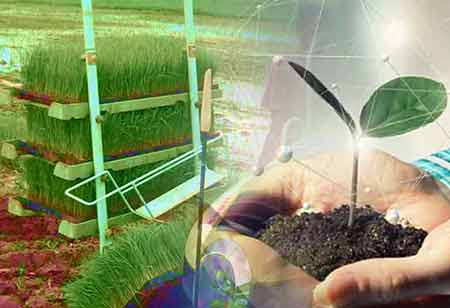Thank you for Subscribing to Agri Business Review Weekly Brief
Advantages of Precision Agriculture
The level of management is the factor that distinguishes precision agriculture from conventional farming methods.

By
Agri Business Review | Tuesday, August 02, 2022
Stay ahead of the industry with exclusive feature stories on the top companies, expert insights and the latest news delivered straight to your inbox. Subscribe today.
Using precision agriculture techniques in farming helps in effective management of the fields, thereby accelerating the output.
FREMONT, CA: Precision agriculture combines new technologies of the information age with an established agricultural sector. It is an integrated crop management system that aspires to distribute different kinds and quantities of inputs required for the actual crop in a farm field. This objective is not new; however, new technologies now available allow the concept to be implemented in a real-world production environment. Precision farming is defined by the advancements that enable it. It is also often referred to as GPS (Global Positioning System) agriculture or variable-rate farming. Information is the essential component of precise farming, so using it efficiently will yield higher profits.
The level of management is the factor that distinguishes precision agriculture from conventional farming methods. Small areas inside fields are managed separately rather than managing the entire field as a single unit. Agronomic practices are essential to maintain this increased level of management. Therefore, a good farm management system must already be in place before contemplating the switch to precision agricultural management.
To ensure the successful operation of precision agriculture, economic and environmental benefits, practical issues with field-level management and the required partnerships to supply the infrastructure for technologies must all be taken into account. Challenges of precision agricultural administration include perceived benefits as well as obstacles to its broad implementation.
Benefits of Using Precision Agriculture
There is always the possibility of uneven yields across the fields, which farmers are usually aware of. These variances are linked to the management methods, the quality of the soil, or environmental factors. Texture, structure, moisture, organic matter, nutritional status, and landscape position are the aspects of soil that influence yields. Weeds, insects, diseases, and the weather are examples of environmental characteristics. Most farmers are concerned about the issue of producing low yields due to variable prompts. There is no economically viable way to fix the depleted topsoil portions of this field. Therefore, the management challenge aids in optimally managing the production-capable sections within the field.
Farmers require years of observation and execution to build a mental information database about handling various areas of a field. However, it is challenging to maintain a vast amount of field condition knowledge due to increased farm sizes and changes in areas cultivated due to annual shifts in lease agreements. Hence, the use of precision agriculture helps in automated and simplified gathering and analysis of data. It allows for a quick and efficient implementation of management decisions in smaller fields within larger fields.
In addition, farmers can use agricultural inputs like fertilisers, insecticides, tillage, and irrigation water more efficiently because of precision agriculture. It helps in increasing agricultural output without harming the environment and using inputs more efficiently. However, determining the cost-benefits of precision agricultural management is challenging.





